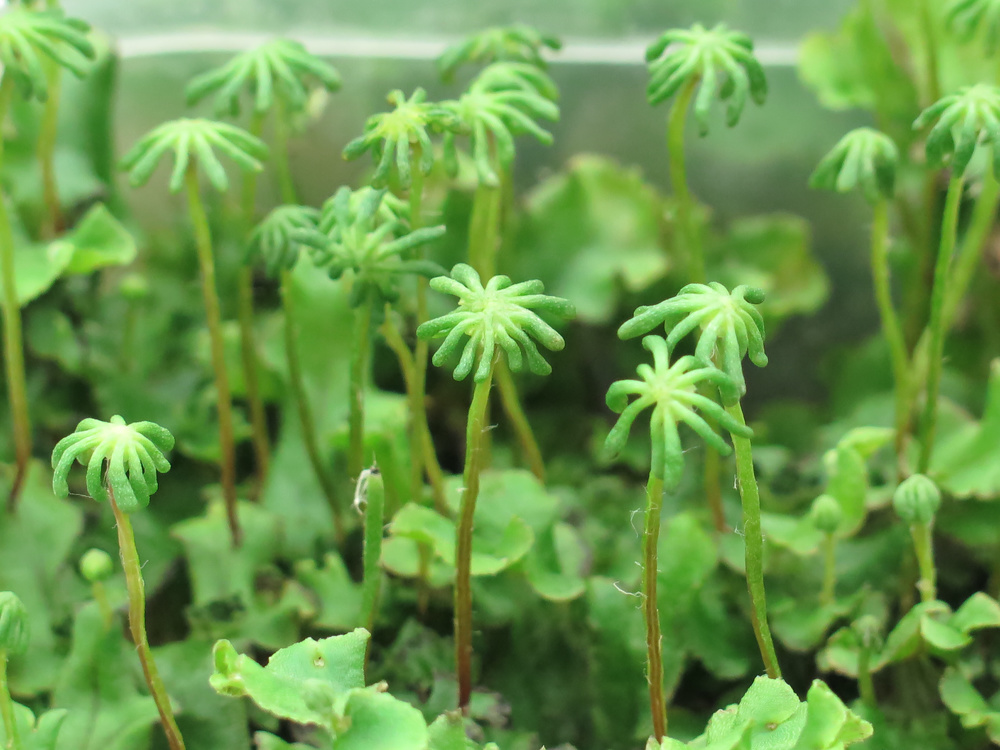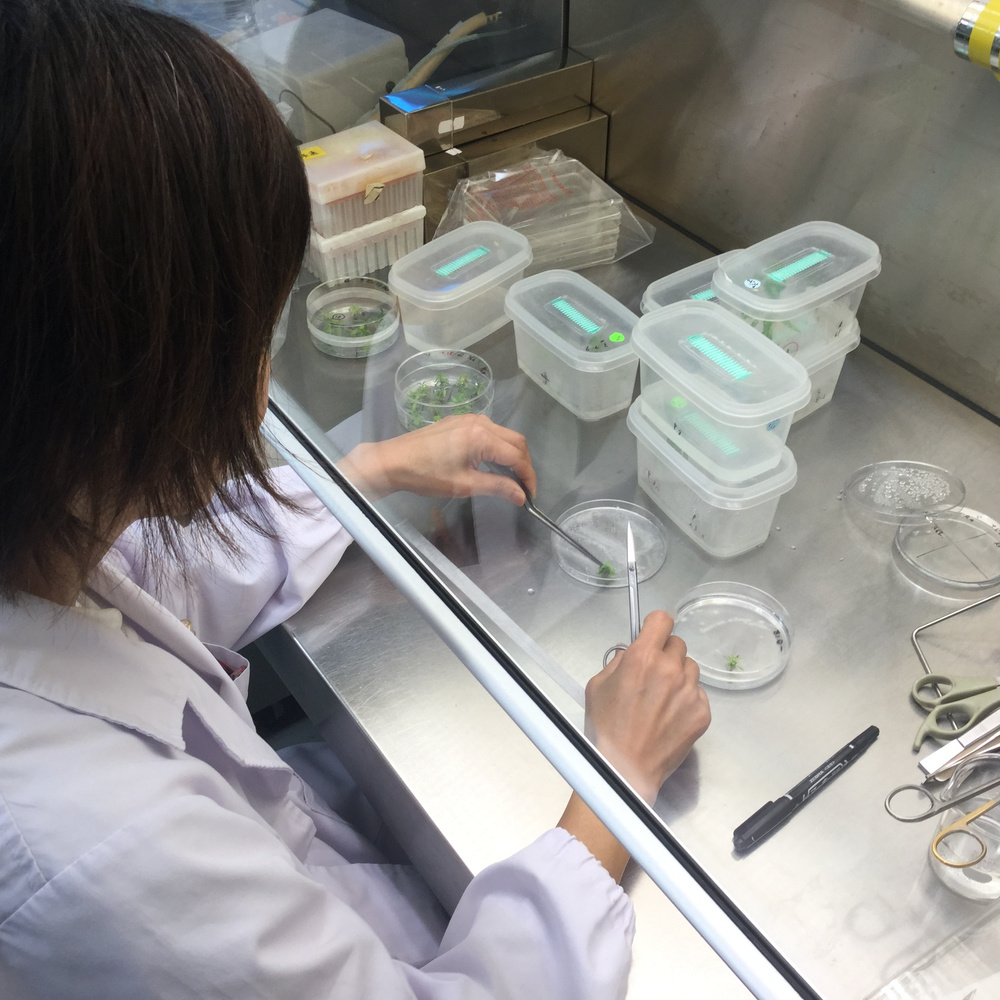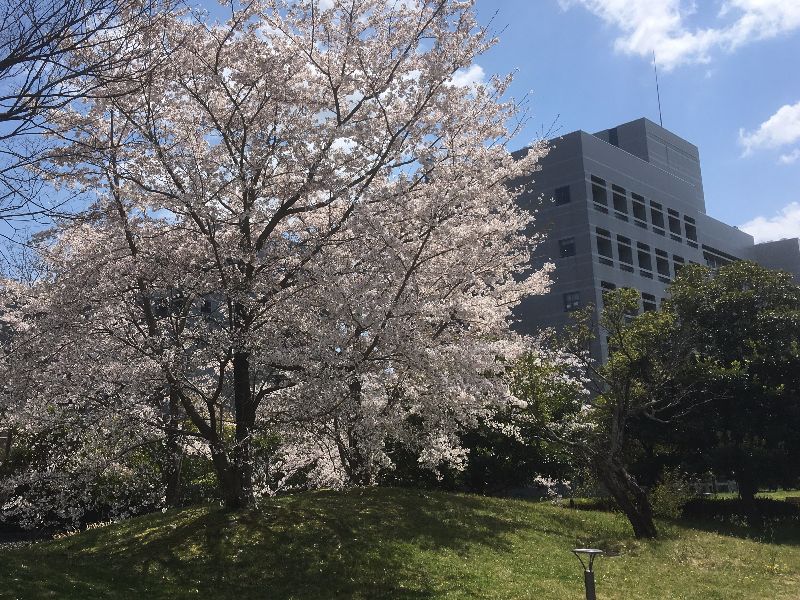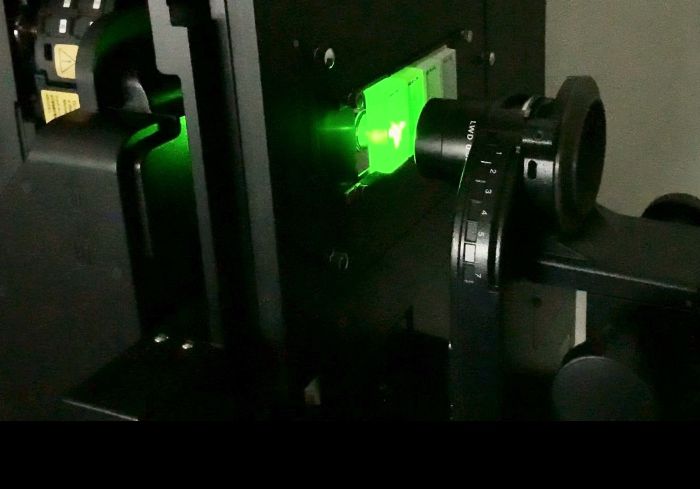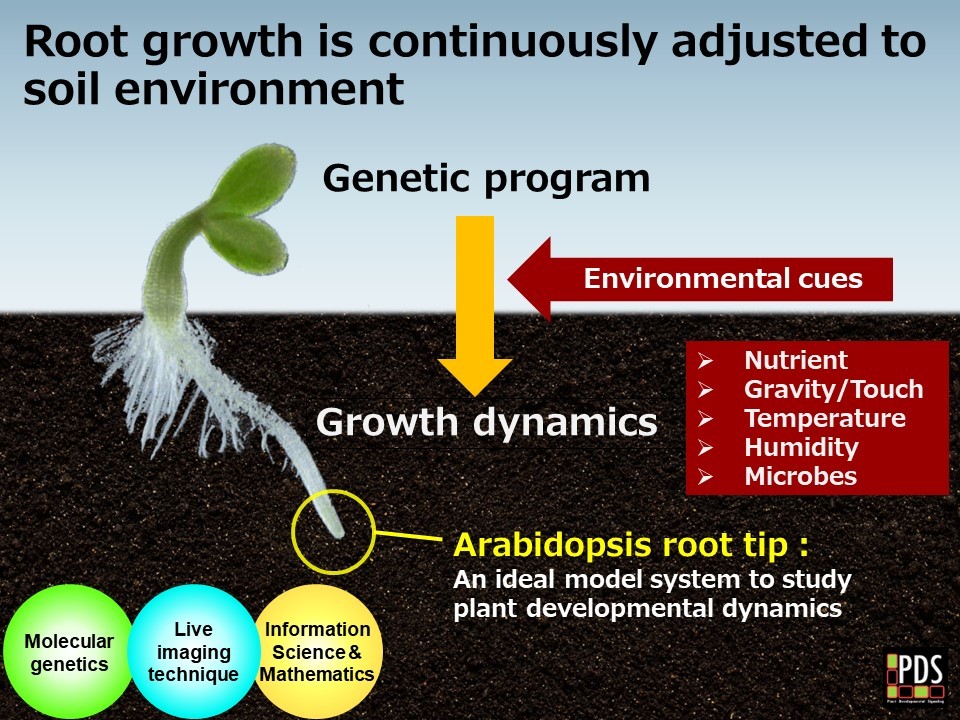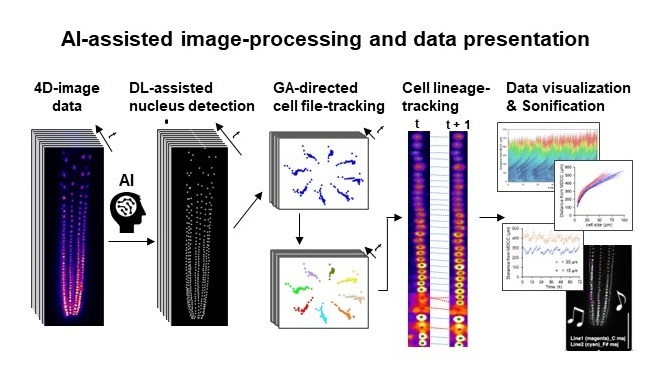PROJECT1
Root Growth Dynamics
Plants, being unable to change their own growth sites, have evolved the ability to flexibly change body and organ shape to adapt to fluctuating environments. Coordinated functions of several processes are required to achieve this ability: perception of environmental information, signal transduction, information processing, and the control of cell division and elongation. The question of how plants, which lack a central nervous system or musculoskeletal system, accomplish these processes is a great mystery.
We seek to unravel this mystery by studying the roots of the model plant species Arabidopsis thaliana. Arabidopsis roots are widely used in plant developmental studies as an excellent model system that allows easy observation of cell division, elongation, and differentiations. We have developed a state-of-the-art microscope system, which can automatically track the tip of vertically growing root. This allows us to analyze how individual cells behave in the growing root, how root morphology and movement are changed, and how the expression of genes and proteins involved in their regulation are altered in response to environmental stimuli.
In collaboration with experts in computer science and mathematical biology, we have also developed image analysis tools using deep-learning to automatically quantify the cell division and elongation dynamics from the imaging data. By utilizing these cutting-edge technologies, we are trying to unravel how root cells respond to various environmental cues, such as nutrients, moisture, gravity, and contact stimuli.




